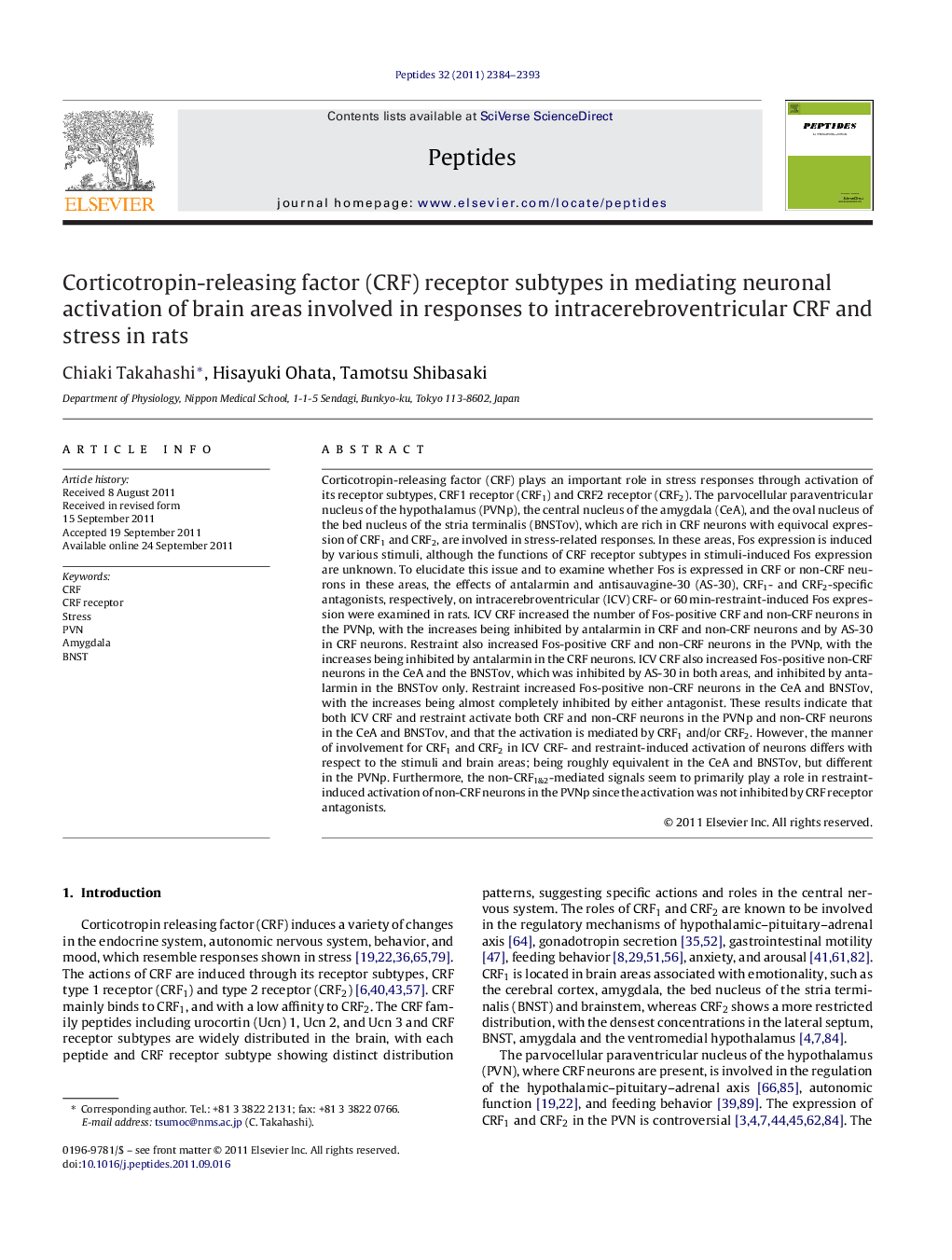| Article ID | Journal | Published Year | Pages | File Type |
|---|---|---|---|---|
| 2006342 | Peptides | 2011 | 10 Pages |
Corticotropin-releasing factor (CRF) plays an important role in stress responses through activation of its receptor subtypes, CRF1 receptor (CRF1) and CRF2 receptor (CRF2). The parvocellular paraventricular nucleus of the hypothalamus (PVNp), the central nucleus of the amygdala (CeA), and the oval nucleus of the bed nucleus of the stria terminalis (BNSTov), which are rich in CRF neurons with equivocal expression of CRF1 and CRF2, are involved in stress-related responses. In these areas, Fos expression is induced by various stimuli, although the functions of CRF receptor subtypes in stimuli-induced Fos expression are unknown. To elucidate this issue and to examine whether Fos is expressed in CRF or non-CRF neurons in these areas, the effects of antalarmin and antisauvagine-30 (AS-30), CRF1- and CRF2-specific antagonists, respectively, on intracerebroventricular (ICV) CRF- or 60 min-restraint-induced Fos expression were examined in rats. ICV CRF increased the number of Fos-positive CRF and non-CRF neurons in the PVNp, with the increases being inhibited by antalarmin in CRF and non-CRF neurons and by AS-30 in CRF neurons. Restraint also increased Fos-positive CRF and non-CRF neurons in the PVNp, with the increases being inhibited by antalarmin in the CRF neurons. ICV CRF also increased Fos-positive non-CRF neurons in the CeA and the BNSTov, which was inhibited by AS-30 in both areas, and inhibited by antalarmin in the BNSTov only. Restraint increased Fos-positive non-CRF neurons in the CeA and BNSTov, with the increases being almost completely inhibited by either antagonist. These results indicate that both ICV CRF and restraint activate both CRF and non-CRF neurons in the PVNp and non-CRF neurons in the CeA and BNSTov, and that the activation is mediated by CRF1 and/or CRF2. However, the manner of involvement for CRF1 and CRF2 in ICV CRF- and restraint-induced activation of neurons differs with respect to the stimuli and brain areas; being roughly equivalent in the CeA and BNSTov, but different in the PVNp. Furthermore, the non-CRF1&2-mediated signals seem to primarily play a role in restraint-induced activation of non-CRF neurons in the PVNp since the activation was not inhibited by CRF receptor antagonists.
► CRF and restraint activate CRF and non-CRF neurons in the PVNp and non-CRF neurons in the CeA and BNSTov. ► The involvement manner of CRF receptors in the stimuli-induced activation of neurons differs with respect to the brain areas. ► The non-CRF1&2-mediated signals seem to primarily play a role in restraint-induced activation of non-CRF neurons in the PVNp.
